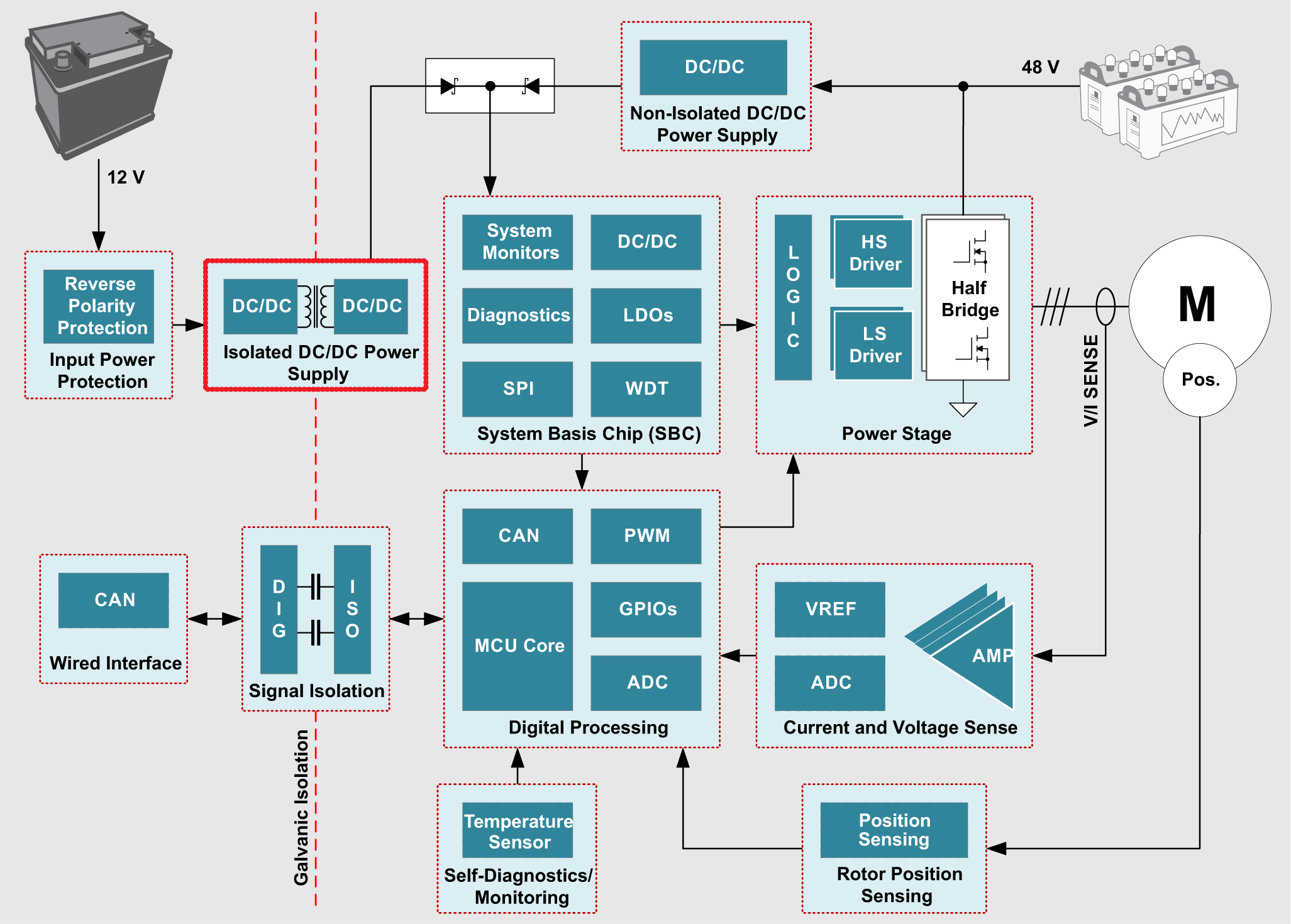SLYT791A may 2020 – may 2020 LM25180 , LM25180-Q1 , LM25183 , LM25183-Q1 , LM25184 , LM25184-Q1 , LM5170-Q1 , LM5180 , LM5180-Q1 , LM5181 , LM5181-Q1 , UCC20225A-Q1
2 Functional Isolation in mHEV Systems
Unlike high-voltage HEV systems that require a reinforced grade of isolation for electric shock protection and safety, the power stages in an mHEV are non-isolated, hence lowering overall system and maintenance costs. However, functional-grade isolation of the control circuits in an mHEV system improves robustness by increasing noise immunity, especially given the high slew-rate switched voltages and currents in the inverter/rectifier and DC/DC power stages. Isolation also reduces ground loops between various subsystems and mitigates electrostatic discharge and electric fast transients. Specific areas of concern related to arcing and fusing are also significant. To add some perspective, Figure 2 details the essential subsystems of a starter-generator system.[6,7]
Figure 2 has a red dashed line that indicates the isolation boundary separating the 12-V and 48-V sides. An isolated power source derived from the 12-V battery, typically implemented as a flyback converter, provides redundant and fault-tolerant backup for an auxiliary-bias supply rail on the 48-V side, with a typical output voltage setpoint of 12 V. This auxiliary supply rail, normally derived from the 48-V battery using a buck converter, supplies the system-basis chip that subsequently powers the embedded processing subsystem, as well as various monitoring and sensing circuits. Depending on the state of charge of each battery (for example, after long-term parking), startup considerations, fault management and other factors, the powertrain control unit may enable or disable the flyback converter as needed.
Having isolation is also useful for the vehicle communication network, especially to deal with ground voltage offsets or loss-of-ground faults on either the 12-V or 48-V side.[3] Finally, as power levels of the motor-generator in mHEV systems increase toward 30 kW, the high-side switch gate drivers of the inverter/rectifier stage integrated in the motor-generator also benefit from isolation. An example of an isolated dual-channel gate driver for 48-V applications is the UCC20225A-Q1. The multi-output capability of a flyback converter is useful here, especially if floating or bipolar gate-drive voltages are required.
 Figure 2 Block Diagram of a
Starter-generator System (Isolated DC/DC Stage Highlighted in Red)
Figure 2 Block Diagram of a
Starter-generator System (Isolated DC/DC Stage Highlighted in Red)